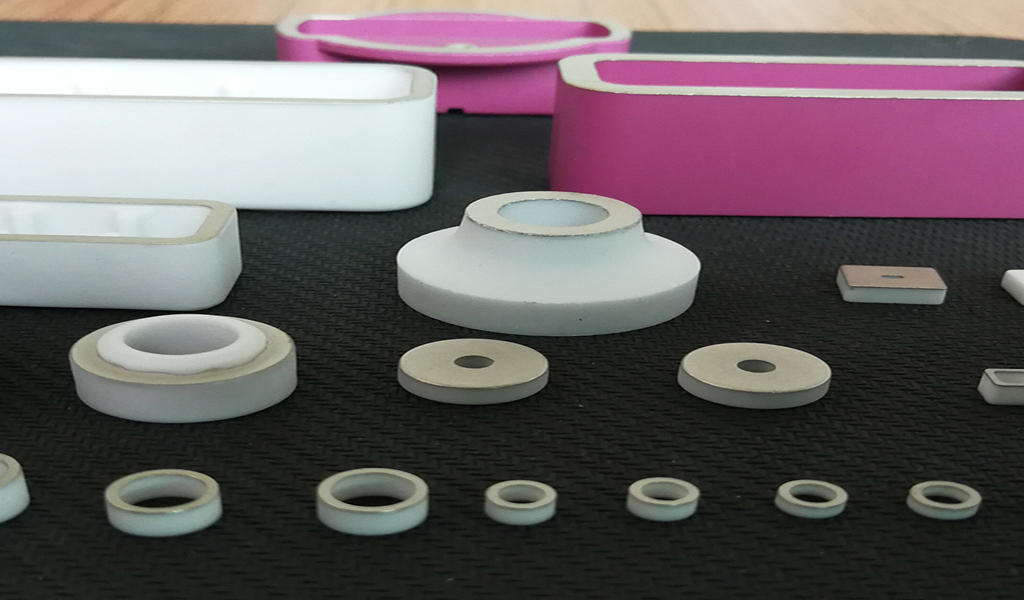my country’s national standard GB3500-83 is basically the same as the first definition, which is defined as “a sintered material consisting of at least one metallic phase and at least one non-metallic phase usually of ceramic properties”. According to this definition, dispersion-strengthened materials, sintered friction materials, and electrical contact materials containing graphite or oxides and carbides all belong to cermets.

For cermets, the main issue to consider is how to combine two or more different phases to obtain a good microstructure. For this purpose the metal (alloy) phase and the ceramic phase must take into account the following conditions:
There should be a certain solubility between the metal phase and the ceramic phase, but there is no violent chemical reaction. A certain solubility contributes to the strong bond between the binder phase and the non-metallic phase, which is considered to be an important reason for the high strength of the C0-WC alloy. In order to obtain a certain degree of mutual dissolution or unidirectional dissolution, adding another component and controlling the process is also one of the methods. For example, in the cr-Al2O3 system, if the oxidizing atmosphere is properly controlled during sintering, a layer of Cr2O3 will be formed on the surface of the metal chromium. This layer of Cr2O3 and Al2O3 is isomorphic, and it is easy to form a solid solution and produce a strong bond. Another example is the reaction of Fe, Co, Ni and Al2O3 to generate spinel phase, that is (Fe, Ni, C0)O•Al2O3 is also conducive to the combination.
Certain reactions between the metallic phase and the ceramic phase are permissible and sometimes advantageous. But if the reaction is vigorous, the metal phase changes to a metal compound phase. As a result, the amount of the metallic phase is greatly reduced, or even ceases to exist, and the entire composite becomes an aggregate of several compounds, and thus does not become a cermet. For example, CrB2 and metal Ni can react as follows at high temperature: 2CrB2+Ni=Cr2NiB4
Another example. MoSi: It is also difficult to add metals to ceramics to make cermets to improve their brittleness. Because it reacts with those metals commonly used in cermets to form complex silicides.
The thermal expansion coefficients of the metallic and ceramic phases should be as close as possible. For a single material, the smaller the thermal expansion coefficient, the better the thermal shock resistance. However, for cermets, in addition to considering the overall thermal expansion coefficient, the difference in thermal expansion coefficient of component materials should also be considered. If this difference is too large, it will cause the material to generate huge thermal stress under the conditions of rapid cooling and rapid heating, and even cause the material to crack or break.
In order to obtain a good microstructure, the amount of metallic phase and ceramic phase should have appropriate requirements. The ideal microstructure of cermets tends to vary greatly depending on the application. However, in order to obtain the best mechanical properties, the most ideal structure should be: the ceramic phase with fine particles is uniformly distributed in the metal phase, and the metal phase exists in a continuous thin film state, wrapping the ceramic particles. According to this requirement, it is reasonable that the amount of ceramic phase should be 15% to 85%.
Related Reading:
Wettability of molten metal (alloy) to ceramic phase
Definition of special ceramic material cermet
Ordinary solid-phase sintering method for special ceramic materials
Special ceramic materials reflect the sintering method
Liquid phase sintering method for special ceramic materials
Thermal densification method of zirconia ceramics
[wp_reusable_render id=2239]
